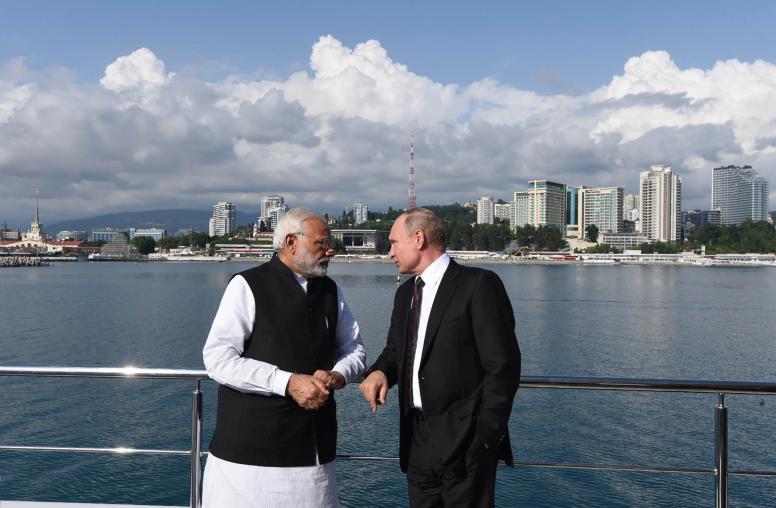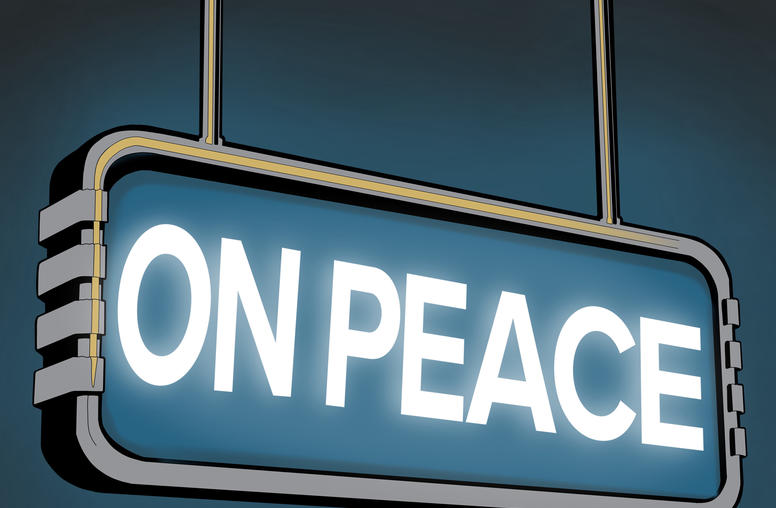Russia’s Ukraine War Has Narrowed — But Not its Goals
Putin remains fixed on erasing Ukraine. Ideas for peace talks can’t ignore that.
Russia’s Ukraine war, launched in February along the 350 miles from Belarus to the Black Sea, has largely narrowed these weeks to a 45-mile-wide assault on cities in the Donbas region. This and other signals may suggest that President Vladimir Putin is limiting his war aims and will settle for consolidation of control over four provinces in southern and eastern Ukraine. Yet this is probably just a short-term change. Putin’s goal is unchanged, and he is prepared to achieve it by degrees. This reality undermines well-meaning suggestions for peace negotiations that are based on beliefs the Kremlin will settle for what it has now.

Putin’s Narrowed Battlefield
On June 29 Putin declared that the “ultimate aim” of the Russian war in Ukraine is “the liberation of the Donbas, the defense of its people, and the creation of conditions which would guarantee the security of Russia itself.” This reflected a rhetorical step back from the goals he proclaimed in the first days of his renewed war: “unconditional consideration for Russia’s legitimate interests in the sphere of security, including recognition of Russia’s sovereignty over Crimea, achieving the objectives of the Ukrainian state’s demilitarization and denazification, and ensuring its neutral status.”
The impression of a narrowed goal also appeared in the Russian military effort in April to achieve a more limited seizure of Ukraine’s four eastern and southern provinces: Luhansk, Donetsk, Zaporizhzhia and Kherson. This smaller advance would still give Putin a victory, fulfilling at least one of his initial declared aims, securing the Donbas region. It also would win Russia a strategically useful overland transport route to the Russian-annexed Crimean Peninsula and would let Russia provide critical water supplies from the mainland to Crimea.
It remains uncertain whether or when Russia may reach its reduced target of taking the south and east. Kyiv’s forces have pushed Russian forces back from Kharkiv and are preparing counteroffensives in the south near Kherson. In Luhansk Oblast (province), Ukraine made Russia pay mightily for every inch of territory, helping to buy time for critical western artillery to arrive. In territory Russians already occupy, Ukraine is conducting resistance operations.
Still, Russia has advanced slowly and has signaled an intent to continue. After Russian troops completed their occupation of Luhansk this month, they immediately stepped up shelling of cities in Donetsk province. Putin directed them to “increase their combat capabilities” and the Kremlin-backed separatist leaders in Luhansk and Donetsk respectively urged and promised further advances against Ukrainian government forces. In the south, Russian forces focused on rebuffing Ukrainian counteroffensives in Russian-occupied Kherson and Zaporizhzhia.
Signs of Russia’s Unchanged Goals
One indicator of Russia’s longer-term goals is the political and administrative steps it is taking that suggest plans to incorporate these provinces into the Russian Federation. All four now have leaders installed by Moscow. The leaders of Donetsk and Luhansk have said they may hold a referendum on joining Russia. Kherson’s Russian-appointed leadership expressed an intention to appeal directly to Putin for incorporation into Russia. Russian lawmakers in June floated a proposal for the creation of a new district of Russia composed of Donetsk, Luhansk, Kherson and Zaporizhzhia, foreshadowing what the Kremlin may intend for that territory. On the administrative front, the mayor of Donetsk city announced that its telephone system would switch this month from the Ukrainian to the Russian country code. Russian occupation officials are also reportedly changing school curriculums from Ukrainian to Russian, connecting Ukrainian cell phones to Russian networks, distributing Russian passports to Ukrainians, and installing puppet governments in the occupied territories.
These administrative and political steps leave little reason to hope that Russia’s tactical regrouping and narrowing of battlefield focus mean that the war is winding down. They demonstrate that Russia is not prepared to accept an independent and sovereign Ukraine. Indeed, Secretary of the Security Council Nikolai Patrushev confirmed on July 5 that ensuring Ukrainian “neutrality” — military and economic and political — remained a Russian war aim. This means Ukraine would have to relinquish not only its goal of NATO membership, but also its aim to become a European Union (EU) member; Russian state media (another Kremlin mouthpiece) insist Russia will never allow “Ukraine or its remnants” to join the EU.
Combined with Putin’s insistence that Ukraine is not a real state, this indicates Putin and the Russian government are prepared for a long campaign, taking and digesting Ukraine chunk by chunk. Russian leaders’ views on Ukraine, expressed in speeches and written doctrines since the collapse of the Soviet Union, make clear they believe Ukraine is, and must remain, in Russia’s sphere of “privileged interest.” Russian actions since the collapse of the Soviet Union suggest that once its stated aims are initially thwarted, Russia will later resume the fight with even more ferocity. An instructive example is the Russian separatist republic of Chechnya, where Russia signed a peace accord and withdrew its troops in 1996, only to re-invade in 1999 in a war that would last for years.
Seeking a Realistic Negotiation Strategy
These disparate pieces of evidence underscore that most of the negotiating proposals put forward by well-meaning experts have a fatal flaw: They assume Russia will settle for what it has now. Thus even if the Ukrainians were prepared to negotiate now, which opinion polls and President Volodymyr Zelenskyy make clear they are not, peace talks in the near term would not bring a sustainable peace. This does not mean, however, that negotiations are not worth considering and preparing. As Juan Diaz-Prinz argues, “a full strategy of support for Ukraine requires that its supporters help to prepare it to make the most of negotiations if and when Ukraine has the opportunity to benefit from them” (emphasis added).
A cease-fire that allows Ukraine to regain its strength may be useful; it would certainly save at least some lives in the near term. Long-term peace, however, will require more creative (and, perhaps, painful) thinking, not least because freezing Russian control of 20 percent of Ukraine will lead to renewed conflict. U.S. and European policymakers need to think about not just how to stop the fighting, but how to prevent it from recurring in future. Certainly, one way is to arm Ukraine so heavily that it deters Russia from attacking again. At the same time, the West can maintain or expand sanctions’ pressure on Russia to weaken it and hurt its ability to attack again.
These approaches, of course, have drawbacks. First, they are costly. President Zelenskyy told the NATO Summit that Ukraine needed around $5 billion per month for its fight against Russia. This may be in addition to the $100 billion that donors already have committed to Ukraine’s overall support. Second, it is unclear that conventional forces will remain a deterrent against nuclear-armed Russia. Finally, the question of how long sanctions can remain effective is open to debate.
It is worth creatively seeking alternative approaches to ending this conflict. One possibility is to open two discussions — one between Russia and Ukraine on ending the fighting in Ukraine and another on European security writ large with a broader set of participants. What, if anything, can be done to change the Russian imperial mentality that discounts its neighbor’s sovereignty? The answer may be to thoroughly defeat the Russian army in the field. It may be to discuss Russia’s long-stated concerns about its place in Europe’s economic and security architecture. The answer may be that nothing will change the Kremlin’s world view, and the only option may be deterrence through force. The cause of peace is at least important enough to justify exploring the possibilities.



